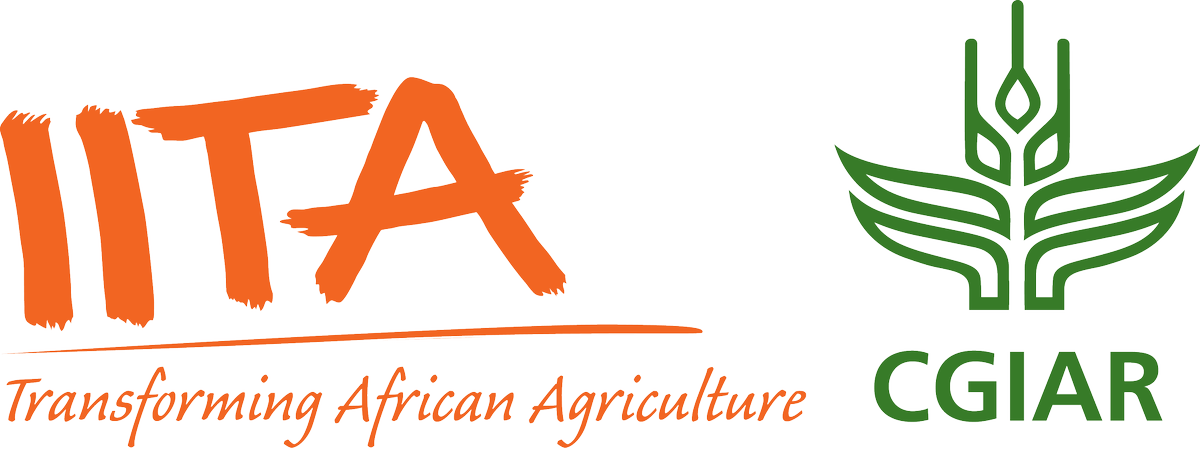Welcome to the International Institute of Tropical Agriculture Research Repository
What would you like to view today?
Simple sequence repeat markers and endogenous phytochemicals associated with somatic embryogenesis in Dioscorea alata L. and Dioscorea rotundata poir

View/
Date
2021-12Author
Ossai, C.O.
Type
Review Status
Internal ReviewTarget Audience
Scientists
Metadata
Show full item recordAbstract/Description
Yams (Dioscorea species) are important staples in Africa, propagated mostly through organogenesis in vitro with low multiplication ratio (1:4). This can be improved through Somatic Embryogenesis (SE) as reported in other crops. However, there is inadequate information on genes and endogenous phytochemicals regulating yam SE necessary for optimising SE protocols in target genotypes. Therefore, this study was conducted to identify Simple Sequence Repeat (SSR) markers and endogenous phytochemicals associated with SE in Dioscorea alata and Dioscorea rotundata. Callus was induced from Axillary Bud (AB) explants of Dioscorea rotundata (Asiedu, Ekiti2a and Kpamyo) and Dioscorea alata (Swaswa and TDa2014) genotypes in Murashige and Skoog (MS) medium modified with 9.1 µM 2,4-Dichlorophenoxylacetic acid and 5.4 µM Naphthaleneacetic acid. The calli were transferred to MS for Embryo Formation (EF). Somatic embryos were transferred to Plantlet Regeneration Medium (PRM) arranged in a Completely Randomised Design (CRD) replicated in triplicates. Number of Plantlets Regenerated (NPR) was recorded. At Callus Induction (CI), EF and Plantlet Regeneration (PR) stages, RNAs were extracted from the genotypes and cDNAs were synthesised using standard procedures. Four SSR markers (YM08, YM18, YM30 and SERK) and the cDNAs were used for gene expression profilling. Endogenous phytochemicals associated with AB, callus and plantlets in three most SE-responsive genotypes were identified and quantified using GC-MS following standard procedures. Effect of exogenous application of four out of the identified phytochemicals, PRM and MS on the genotypes was investigated in a 5 x 6 factorial in a CRD replicated in triplicates and NPR was recorded. Data were analysed using descriptive statistics, linear correlation and ANOVA at α0.05. The NPR differed significantly among genotypes and ranged from 1.6±1.4 (TDa2014) to 7.9±4.0 (Ekiti2a). Only YM08 and SERK were expressed in Kpamyo, Ekiti2a and Asiedu but undetermined in Swaswa and TDa2014. The YM08 was upregulated at EF and PR of Asiedu, CI and EF of Kpamyo and Ekiti2a, respectively, while SERK was upregulated at CI of Asiedu, CI and EF of Ekiti2a, but downregulated at EF of Kpamyo. A total of 27, 22 and 35 phytochemicals were identified in Kpamyo, Ekiti2a and Asiedu, respectively; with organosilicon, carboxylic acid, amino acid and quinoline functional groups. Hexamethylcyclotrisiloxane (HC) (36.4%, Kpamyo), Tris-tert-butyldimethylsilyloxy-arsane (TRIS) (59.3%, Ekiti2a) and 4-Methyl-2-trimethylsililoxy-acetophenone (M42T) (52.7%, Asiedu) were highest in callus. N-Methyl-1-adamantaneacetamide (31.8%, Kpamyo) and TRIS (52.7%, Ekiti2a, Asiedu) were highest in plantlets, while TRIS (41.2%, Kpamyo), HC (55.8%, Ekiti2a) and Erythro-9,10-Dibromopentacosane (38.9%, Asiedu) were highest in AB. In Kpamyo and Ekiti2a, Decamethyltetrasiloxane and HC, respectively, significantly correlated (r=1.0) with NPR, while DT and M42T significantly correlated (r=1.0) with NPR in Asiedu. The NPR differed significantly among phytochemicals and ranged from 0.7±0.3 (MS) to 4.5±0.5 (40.5 µM Phenylacetic Acid-PAA). Also, genotype x phytochemical interactions on NPR was significant and ranged from 0.0±0.0 (TDa2014, 4.8 µM DT) to 7.0±1.7 (TDa2014, 40.5 µM PAA). Micropropagation through somatic embryogenesis in Dioscorea rotundata doubled that in Dioscorea alata. The YM08 and SERK markers were stage and genotype-specific, while the application of 40.5 µM phenylacetic acid enhanced plantlet regeneration in TDa2014.
